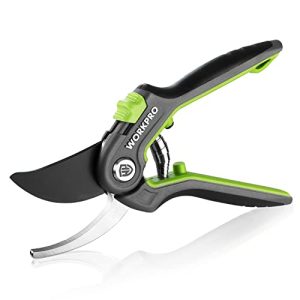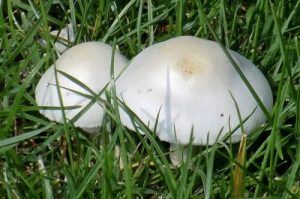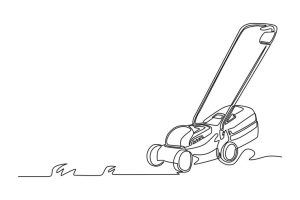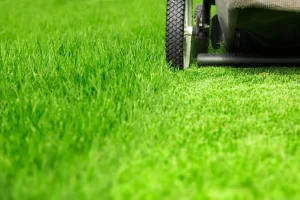Imagine setting up a bird feeder in your backyard, only to find it swarming with beautiful birds in no time. It feels almost magical, doesn’t it?
You might wonder how these feathered friends manage to find your bird feeder so quickly and reliably. Well, you’re not alone in this curiosity. In fact, understanding this little mystery can transform your bird-watching experience into something truly enchanting. You’ll uncover the secrets behind how birds locate bird feeders with such precision.
You’ll learn the natural instincts and survival skills that guide them, and how you can use this knowledge to attract even more birds to your yard. If you’ve ever marveled at the sight of a vibrant cardinal or a playful chickadee at your feeder, you’ll want to keep reading. The fascinating answers lie just ahead, and they might just change the way you see these incredible creatures forever.
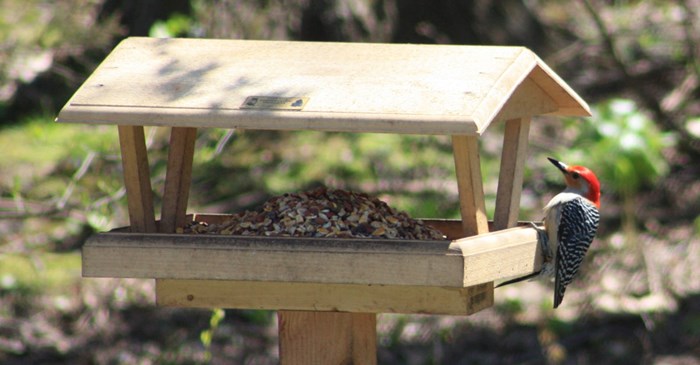
Instinct And Natural Behavior
Birds are fascinating creatures with instincts and behaviors that guide them in their quest for food. Understanding how birds find your feeder can enhance your birdwatching experience and help you create a welcoming environment for them. You might wonder, how do birds instinctively know where to find food sources in the vast outdoors?
How Birds Use Their Senses
Birds rely heavily on their senses to locate food. Their keen eyesight helps them spot feeders from afar, especially if the feeder is brightly colored. Some birds can detect ultraviolet light, which makes certain colors more appealing and noticeable.
Smell plays a role too, although not as prominently as vision. While not all birds have a strong sense of smell, some species can detect certain scents, leading them to potential food sources. Are you using aromatic seeds or suet in your feeder?
Natural Foraging Behaviors
Birds are programmed to forage for food, a behavior that leads them to explore new areas. They often travel in flocks, increasing their chances of finding food. When a bird discovers your feeder, it might return with its companions.
Consider if you’ve ever noticed a sudden influx of birds at your feeder. This flocking behavior can quickly spread the word within the bird community, ensuring your feeder becomes a popular spot.
Trial And Error
Birds are curious and learn from experience. They might visit various locations and remember successful feeding spots. If your feeder consistently offers good food, birds will mark it in their mental map.
Have you changed the type of food in your feeder and noticed different birds visiting? This trial and error aspect can be a fun experiment, offering you insights into what attracts specific bird species.
Environmental Cues
Birds also use environmental cues to find feeders. They observe the behavior of other birds and might follow them to food sources. The sounds of feeding or chirping can attract nearby birds.
Does your feeder have a lot of activity and noise? This can signal to other birds that your feeder is a reliable food source, creating a lively birdwatching experience for you.
By understanding these instincts and behaviors, you can better attract and enjoy birds at your feeder. Are you using what you know to create the best feeding environment? The birds are waiting to see what you’ll do next!
Visual Cues
Birds have a keen ability to spot bird feeders. They rely heavily on visual cues. These cues help them locate food sources. Understanding these cues can enhance bird feeder placement.
Color Perception
Birds see colors differently than humans. Bright colors attract them. Red and yellow are particularly noticeable. Feeders in these colors catch their eye. Colorful flowers or decorations can also help.
Movement Detection
Birds are sensitive to movement. A swinging feeder grabs their attention. Wind or animals can cause movement. Birds notice these changes quickly. Positioning feeders in breezy spots may help.
Auditory Signals
Birds locate feeders using auditory signals, like the chirping of other birds feeding nearby. These sounds indicate safety and food availability, attracting more birds to the area.
Auditory Signals Birds are incredibly resourceful when it comes to locating food. While their eyesight is sharp, their ears play a crucial role too. Auditory signals are a fascinating aspect of how birds find a bird feeder. Imagine a quiet morning with the sun just peeking over the horizon. Suddenly, you hear a chorus of chirps and calls. These sounds are more than just background music; they’re critical signals that guide birds to food sources.Bird Calls And Communication
Birds have a unique way of communicating with each other. They use specific calls to alert others about food. Each species has its own language, a mix of chirps, tweets, and songs. You might have noticed a sudden increase in bird activity around your feeder after just one bird arrives. That bird probably sent out a call, inviting others to the feast. This social sharing ensures that a wider bird community can enjoy the bounty.Sound Of Food Sources
Birds can also detect the sounds made by food itself. Think about the rustling of leaves or the crackling of seeds being eaten. These subtle noises can lead a bird to your feeder. Next time you fill your bird feeder, listen closely. You might hear the soft tap-tap of seeds hitting the surface. Birds, with their acute hearing, pick up on these sounds, recognizing them as signals of available food. Have you ever wondered why certain birds seem to find your feeder faster than others? It could be because they are more attuned to these auditory signals. This keen sense of hearing can be the difference between a well-fed bird and a hungry one. Auditory signals remind us that nature has its own communication system. By understanding these signals, you can create an even more inviting environment for your feathered visitors.
Olfactory Abilities
Birds possess remarkable senses that guide them to food sources. Many people wonder how birds locate feeders. Their olfactory abilities play a significant role. Birds can detect scents in the air. This helps them find food even from afar.
Understanding how birds use their sense of smell is fascinating. It offers insights into their behavior. Let’s explore the details of their smell sensitivity and scent trails.
Smell Sensitivity
Birds have varying levels of smell sensitivity. Some species rely heavily on their sense of smell. Others may use it less frequently. Birds like vultures have a keen sense of smell. They can detect the scent of carrion from miles away.
Birds use olfactory cues to locate food. This skill is vital for survival. Their ability to smell aids in finding feeders. Their acute sense of smell leads them to food sources effectively.
Scent Trails
Scent trails guide birds to feeders. These trails are invisible paths in the air. Birds follow these scents to discover feeders and food. The scent of seeds or suet attracts birds. They can track these odors with precision.
Scent trails help birds find feeders in busy environments. This ability ensures they locate food quickly. The scents create a map for birds to follow. It simplifies their search for nourishment.
Social Learning
Birds locate feeders through social learning by observing peers. They follow others to food sources, mimicking behaviors. This communal learning helps them discover feeders efficiently, ensuring survival in changing environments.
Birds have an impressive ability to find feeders, often quicker than you might expect. One fascinating way they accomplish this is through social learning. Social learning is when birds learn from each other, much like how humans pick up new habits from friends. This shared knowledge is crucial for survival, especially in environments where food sources can be scarce. Ever wondered how a flock of sparrows suddenly appears at your newly placed feeder? Their learning process involves keen observation and group dynamics that you might find intriguing.Observational Learning
Birds are avid observers. They watch other birds closely to learn and adapt. When one bird discovers a feeder, others are quick to notice its actions. This observational learning is like watching a tutorial on YouTube, where you see someone doing something new and decide to try it yourself. Have you ever spotted a lone bird at your feeder, only to find it surrounded by others minutes later? That’s observational learning in action. The first bird serves as a pioneer, with others following suit after watching its success. So, the presence of one bird often leads to a flock.Role Of Flock Behavior
Flock behavior plays a significant role in how birds find feeders. Birds in flocks communicate and share information seamlessly. They rely on each other to identify food sources and ensure safety while feeding. This behavior is both practical and social. Imagine a flock of birds circling your yard. They are not just flying aimlessly. They are gathering intelligence. This group dynamic allows them to cover larger areas and find food efficiently. As one bird finds a feeder, it signals others, creating a ripple effect of discovery. Have you considered how your backyard becomes a meeting spot for diverse bird species? Observing their interactions might inspire you to think about how humans rely on social networks for information. Would your feeder be just as popular if birds couldn’t learn from each other?Habitat Familiarity
Habitat Familiarity Birds are amazing navigators, often finding food sources like bird feeders with impressive accuracy. One key factor in their ability to locate feeders is habitat familiarity. Birds are creatures of habit and often stay within territories they know well. This familiarity with their environment plays a crucial role in how they find food. Birds are highly aware of their surroundings within their territories. They pay attention to every tree, bush, and structure. This awareness helps them notice when a new bird feeder appears. Think about how you feel when a new cafe opens in your neighborhood. You notice it quickly because it’s a change in your familiar environment. Similarly, birds are naturally alert to changes and new additions in their habitats. Birds defend their territories fiercely. This behavior ensures they know every inch of their domain. When a bird feeder is added, it’s like a new landmark in their mental map. They will investigate this new addition, especially if it promises food. Birds have excellent memories, which help them remember the locations of food sources. When they find a bird feeder, they often remember its location for future visits. Have you ever remembered the way to a friend’s house without needing directions? Birds do something similar with feeders. Their memory allows them to return to these spots, day after day. This is why once birds discover your bird feeder, they tend to visit frequently. They rely on their strong memory to navigate the landscape and remember where they’ve successfully found food before. Consider if your feeder goes empty for a few days. Birds often return to check, relying on their memory and hoping for a refill. This persistence shows just how much they count on remembered locations for survival. How might you use these insights to attract more birds to your garden? Understanding their territorial behavior and memory can help you strategically place feeders. This knowledge can transform your garden into a bustling bird sanctuary.Impact Of Feeder Design
Feeder design plays a crucial role in attracting birds. Bright colors and safe locations entice them. Birds rely on their keen eyesight and memory to locate food sources.
The design of a bird feeder significantly influences how quickly and effectively birds can find it. A well-thought-out feeder attracts a variety of birds, enhancing your backyard’s liveliness and biodiversity. As you consider adding a bird feeder, keep in mind how its design can impact its success in attracting feathered visitors.Shape And Structure
The shape and structure of a feeder can make a world of difference. Tube feeders are excellent for small birds like finches, while platform feeders attract larger species such as cardinals. Consider the birds you want to attract and choose a feeder that suits their feeding habits. Birds have keen eyesight and can spot certain shapes from afar. A feeder with bright colors or distinct features can catch their attention quickly. Try experimenting with different designs to see which ones draw the most visitors to your garden.Placement And Accessibility
Where you place your feeder is crucial. Birds need to feel safe as they feed, so consider spots that offer some shelter from predators like cats or hawks. A location near a tree or bush can provide a quick escape route for them. Think about the height of your feeder. Different birds have varied preferences; some like ground-level feeders, while others prefer them hanging higher. Adjust the feeder’s height to cater to the birds you notice in your area. Ensure that the feeder is easy to refill and clean. A well-maintained feeder is more attractive to birds and reduces the risk of disease. Regular maintenance keeps the feeder inviting and ensures a steady flow of visitors.Influence Of Weather And Seasons
Have you ever wondered how birds manage to find your bird feeder? The answer often lies in the influence of weather and seasons. These natural elements play a crucial role in guiding birds to food sources. As the environment changes, so do the behaviors and needs of birds. Let’s dive into how weather and seasons impact their search for nourishment.
Migration Patterns
Migration is a spectacular event that many bird enthusiasts eagerly anticipate. As seasons shift, so do the migration patterns of birds. During migration, birds travel vast distances seeking favorable climates and food sources. If your feeder is along their route, it can become a welcome pit stop.
Consider positioning your feeder near natural cover or water sources that migrating birds frequent. This increases the likelihood of them stopping by. Have you noticed specific birds visiting your feeder only during certain times of the year? It’s likely due to their migratory habits.
Seasonal Food Availability
The availability of food changes with the seasons, influencing which birds visit your feeder. In spring and summer, natural food sources are abundant. Birds might not rely on feeders as heavily. However, as winter approaches and natural supplies dwindle, feeders become crucial for survival.
Think about the types of seeds or suet you offer. Certain foods can attract specific species during different seasons. Experiment with seasonal offerings to see which birds visit your feeder. How does the food you provide change with the seasons?
Weather and seasons bring about fascinating changes in bird behavior. By understanding these patterns, you can create a feeder environment that attracts a variety of birds year-round. Have you tried adjusting your feeder setup according to the seasons? The rewards can be beautiful.
Human Interaction
Birds rely on human interaction to find bird feeders. People play a key role in attracting birds to their yards. By maintaining bird feeders, humans create a reliable food source. Birds learn to trust these consistent food supplies. They visit regularly, drawn to a safe and plentiful feeding spot.
Feeder Maintenance
Proper feeder maintenance is crucial for bird attraction. Clean feeders prevent disease spread among birds. Regularly remove old seeds and debris. This keeps the feeder fresh and inviting. Birds prefer clean feeding areas. A well-maintained feeder signals a safe place to eat. It encourages more birds to visit your yard.
Supplemental Feeding Practices
Supplemental feeding practices enhance bird attraction. Offer diverse seed types to cater to various birds. Sunflower seeds, millet, and suet attract different species. Placing feeders at varying heights can help. This accommodates birds with different feeding habits. Consistent feeding schedules are vital. Birds learn when to expect food. They will return frequently if fed regularly.

Frequently Asked Questions
What Is The 5 7 9 Rule For Bird Feeders?
The 5 7 9 rule suggests placing bird feeders at either 5, 7, or 9 feet high. This height deters predators while allowing birds safe access. It ensures feeder visibility and accessibility for both small and large birds, promoting a bird-friendly environment.
How Long Does It Take For Birds To Find Birdfeeders?
Birds usually find new feeders within a few days. Keep the feeder visible and filled with fresh seeds. Attract birds faster by using bright colors and placing it near trees or bushes. Different bird species may take varying times to discover the feeder.
Patience and consistency are key.
How To Get Birds To Recognize A Bird Feeder?
Place the bird feeder in a visible, quiet location. Use bright colors to attract attention. Fill it with seed birds love. Clean it regularly to ensure health and safety. Be patient, as it may take time for birds to notice and recognize the feeder as a food source.
Why Aren’t Birds Finding My Bird Feeder?
Birds might not find your feeder due to its location, lack of food variety, or unfamiliarity. Place it in a quiet, visible spot. Offer diverse seeds and ensure cleanliness. Patience is key, as it may take time for birds to discover and trust your feeder.
Conclusion
Birds use sight and sound to find feeders. Bright colors attract them. They also respond to other birds’ calls and movements. A well-placed feeder can draw many birds. Keep it filled with seeds they like. Regular maintenance ensures the feeder stays inviting.
Watching birds gather is a rewarding experience. Simple changes can improve your chances of attracting them. Understanding their habits helps in choosing the right spot. Make your garden a welcoming place for birds. Enjoy the beauty they bring to your space.
Birdwatching can become a delightful hobby for everyone.


